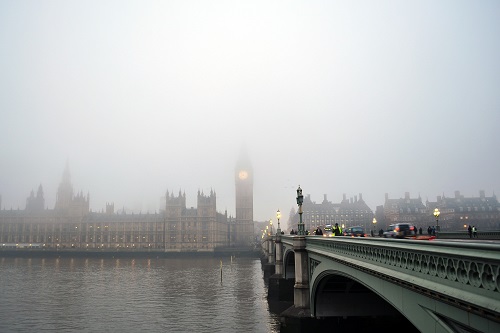Sandra Mode photo
By
Justin Fox
Shocking statistics were released this month based on the latest updated London Atmospheric Emissions Inventory, showing that every area in London exceeds World Health Organisation (WHO) limits for a damaging type of particle known as PM2.5.
It was also found that 7.9 million Londoners (nearly 95% of the capital’s population!) live in areas that exceed the limit by 50% or more. In central London the average annual levels are almost double the WHO limit of 10 µg/m3.
What does this mean for us?
It is not just London which is under scrutiny for air pollution. The global statistics make grim reading. The World Health Organisation says air pollution is connected to 7 million deaths – one in eight of total global deaths.
The 2016 report Every Breath We Take: the Lifelong Impact of Air Pollution by the Royal College of Physicians (RCP) said that each year air pollution causes around 29,000 deaths in the UK and may rise to 40,000 deaths when considering nitrogen dioxide exposure.
Exposure to air pollution can increase chance of respiratory and cardiovascular disease.
Poor air quality has long been linked to lung and heart problems, including:
- Coronary artery disease
- Emphysema
- Respiratory infections
- Stroke
- Cancer
It also is especially dangerous for pregnant women, as it can contribute to birth defects and premature births.
Air pollution can also exacerbate numerous conditions, including:
- Asthma
- Chronic obstructive pulmonary disease (COPD)
- Cardiovascular disease
- Diabetes
Children are particularly vulnerable to air pollution, as they may potentially develop asthma. London’s Mayor, Sadiq Khan, described the results as ‘sickening’.
Indoor air pollution
If the latest air pollution research makes you want to stay indoors, you’ll be shocked to learn the air indoors may be even more damaging, due to levels of pollution.
Indoor air pollution can up to 50% more polluted than outdoor air, as contained areas enable potential pollutants to build up more than open spaces do. Of those 7 million deaths due to air pollution on the WHO report, 3.3 million are due to indoor air pollution.
Air pollution, be it the indoor variety or the more visible outdoor type, is undoubtedly bad for your health.
What can be done?
Realising the urgency of the situation, professionals are now coming together to come up with solutions. The ‘Better Homes, Better Air, Better Health’ event brought together professionals from across the research, industry, policy and third sector communities to think about and inform future action on solutions for acting now to reduce high outdoor air pollution levels and reducing exposure to air pollution when indoors.
Indoor contributions of particulate matters are much higher when open windows are exposed to traffic fumes. Recognition of pollutant sources, environmental control and avoidance remain the most effective countermeasures. Regular cleaning of air conditioners and filters will help. You should avoid pollutants from traffic emissions through open windows.
Ensure that there is suitable ventilation in your home and workplace. This will help to remove harmful pollutants swiftly and effectively, thereby reducing the level of air pollution.
London’s Mayor has revealed plans to limit the use of wood-burning stoves in the capital and tighten up regulations. He has also set out to add a new T-Charge to charge older, more polluting vehicles from entering London. An ultra-low emission zone will also be introduced in 2019. These actions are welcomed by clean air campaigners, health charities and the Green Party.
The Mayor has signed London up to the Breathe Life coalition organised by the WHO, the body UN Environment and the Climate & Clean Air Coalition at the Child Health Initiative conference at City Hall.
London’s air quality strategy centres around an ambitious target: becoming a zero-carbon city by 2050. This may seem like an impossible challenge more fitting for science fiction, but such shocking statistics and health consequences need a revolution.
Justin Fox
Justin Fox is from North London and believes passionately in a number of environmental causes. With a keen interest in politics and current affairs, he writes for a number of sites about how the two can be combined, so as to enrich our society with forward-thinking and sustainable policies that look to the needs of the future.



No Comments Yet!
You can be first to comment this post!